Content
Keeping and breeding bees requires a competent approach. The result of improper care can be swarming of bees in the fall. This process is accompanied by the relocation of part of the bee family to another home. Most often, a swarm migrates due to lack of space during the growth of working individuals.
Why do bees fly away from the hive in autumn?
Swarming is the sudden flight of bees from their home in the fall. Insects leave the hive in a crowd, together with the queen bee. In the former home, the swarm leaves honey and printed brood. At first glance, there are no visible reasons for migration. But there are factors that can provoke bees to swarm. These include:
- lack of space for storing nectar as a result of overpopulation;
- overheating of the hive or draft;
- lack of honey plants near the hive;
- incorrect choice of material for building a hive;
- aging of the uterus;
- death in honey stored for the winter;
- an electromagnetic field unfavorable for the swarm.
Sometimes beekeepers provoke swarming purposefully. This is necessary to increase the population of the species.But this process has a negative impact on the quality of the crop. In this case, the distance between the honeycombs is reduced to 9 mm. At the same time, the swarm is fed with sugar syrup. But most often, beekeepers try to create favorable conditions for bees. This reduces the risk of them swarming.
Signs of an autumn gathering of bees
Beekeepers can predict the swarming process approximately 7-9 days before it begins. The following signs help with this:
- formation of queen cells on honeycombs;
- increased buzzing in the hive;
- stopping brood sowing;
- the presence of a large amount of drone brood;
- concentration of worker bees on the arrival board of the hive.
To make sure that swarming is possible, you need to install a control frame in the hive, first dividing it in half. The foundation should be partially pulled over the lower part. The upper part should be empty. If the bees begin the process of filling the honeycombs, then swarming should not be expected. The negative development of events is indicated by the appearance of drone brood and queen cells.
List of possible reasons for bees swarming in autumn
In most cases, bees fly away from the nest in the fall due to improper actions of the beekeeper or changes in weather conditions. When the atmosphere in the home becomes unfavorable for the further work of the swarm, it is forced to look for a more comfortable place to stay. In some cases, the swarming process is initiated by the queen, and the rest of the family rushes after her.
Bee diseases
In the autumn, the swarm can become infected with an infection or virus. Most often, the disease causes deformation of the wings.The most common infection typical of bees is melanosis. It can provoke the death of the queen bee, which means the cessation of the swarm reproduction process.
The causative agent of the disease is a mold fungus. Most often, it is concentrated in the epithelium of the oviduct, having an inhibitory effect on the process of oviposition. The uterus becomes inactive, its abdomen increases in size. Ultimately, the swarm can push the sick queen bee outside the hive, where she finally dies. Another option for the development of events is the beginning of swarming.
Seasonal activity of ticks
Varroa mite activity increases between late summer and early fall. They suppress the immune system of bees and spread dangerous diseases. To prevent swarming as a result of the destruction of a bee nest, preventive measures should be taken. To do this, after harvesting the last harvest, the beehive is treated with chemicals. Ticks are fairly easy to spot. They are located directly on the body of worker bees.
Violation of the feeding schedule and norms
Beekeepers often feed insects with sugar syrup. This has a positive effect on the quality of the crop. Excessive feeding leads to the fact that the younger generation does not have time to process it. For this reason, serious diseases develop that reduce the performance of the swarm. Therefore, it is important to dose the fertilizer.
Old or diseased uterus
At the head of the bee swarm is the queen. She is responsible for laying eggs and raising larvae. Its average lifespan is 5 years.But only in the first 2 years, eggs are laid at an accelerated pace. In the swarm queen cell there are several cells in which future queens are laid. Over time, the reproductive function of the queen bee decreases. For this reason, the swarm's defenses are weakened. If the swarm does not have time to replace the queen with a young individual, the swarming process will begin.
Reduced bee activity
If bees fly away from the hive in September, the reason may be their weakened state. In this case, the swarm is in search of a stronger family in order to maintain its population. The activity of the swarm can be affected by weather conditions, environmental conditions and the actions of the beekeeper. Often, the swarming process is provoked by nearby cell phone towers. If the swarm was weak initially, the beekeeper needs to combine it with another family. Creating a new family is best done in the spring. This will help avoid swarming.
Frames with a swarm of bees from a weak colony are transplanted into a stronger hive. It is important to ensure that the bees adapt to the new smell and consider it theirs. To do this, the hive is sprayed with a decoction of mint or lemon balm. It is not worth leaving the swarm in the same place. It is advisable to change the location by placing a little hay on the landing board. The representatives of the bee swarm will initially use it as a guide.
Poor quality honeycombs
Bee swarming in the fall can develop due to improper selection of material for the hive. Excessive chemical smell from paint repels them. Therefore, it is necessary to pay increased attention to the selection of building materials. High quality is evidenced by smooth and correctly constructed honeycombs. The frame gap must be completely filled with them.If the honeycomb changes color, it becomes unusable.
Increase in honeydew
Honeydew is the waste product of insects that feed on plant sap. It is a liquid with a sticky consistency and a sweet taste. Most often, honeydew is produced by aphids. There is so much liquid that it begins to drip from the trees. That is why it was given such a name.
In addition to nectar, a bee swarm can collect honeydew. This is typical during the dry period, when other sources of honey flow disappear. In large quantities, honeydew provokes poisoning. This phenomenon is called honeydew toxicosis of bees. It ends with the death of the working part of the swarm. Due to the gradual disintegration of the family, swarming begins in order to search for the most favorable conditions.
What to do if bees fly out of the hive in the fall
If bees fly away from their home in the fall, you can prevent this process by taking preventive measures in time. To do this, it is necessary to regularly observe the behavior of the family in different life cycles. It is also worth approaching the construction of a hive responsibly. It is important to give preference to high-quality materials and periodically check the home of the bee swarm for the presence of honeydew.
During the period of increased mite activity, preventive treatment of the hive is carried out. This will help prevent the swarm from weakening due to disease. Don't overfeed the bees. If swarming is suspected, it is advisable to cut the diet several times. It is equally important to regularly check the surrounding area for foreign odors. Because of them, the swarm can change its place of residence. If there are irritating factors around the nest, it is necessary to move the hive to another location.
If swarming cannot be prevented, special traps should be used. It is recommended to use large boxes to catch swarms. To increase the chances of a successful result, you should set 2-3 traps at once. Inside the boxes you need to make ventilation holes and place drying frames. The optimal quantity is from 5 to 8 pieces. Since the swarm in most cases stops on pine or spruce trees, traps must be hung on these trees. It is recommended to lubricate the boxes with special preparations or pine needles.
After the swarm has settled into the trap, it is transferred back to the hive. This must be done in the late evening, when all the bees have finished their activities. Before transplanting a swarm, it is important to ensure the presence of a queen.
Another effective way to prevent bees from swarming is to trim the queen's wings. It is recommended to remove 1/3 of one wing. This will be enough to keep the swarm in place. This method does not affect the reproduction of the family.
Quiet changing of the uterus will help if done in advance. The bee swarm must be at its limit. The most suitable period for this procedure is from late April to early May. If measures are taken during this period, a complete replacement of queens will occur by the end of June. This will avoid autumn swarming.
Conclusion
Bee swarming in the fall brings a lot of concern to beekeepers. But with the right approach, migration of the swarm can be avoided and their ability to produce honey can be preserved.The sooner signs of an impending swarm are detected, the greater the chance of maintaining the swarm in full force.
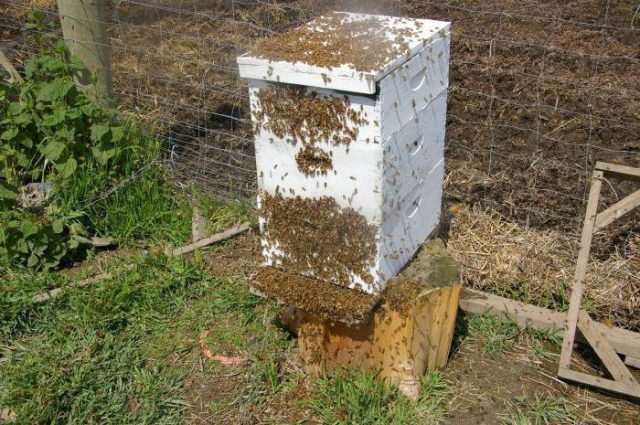
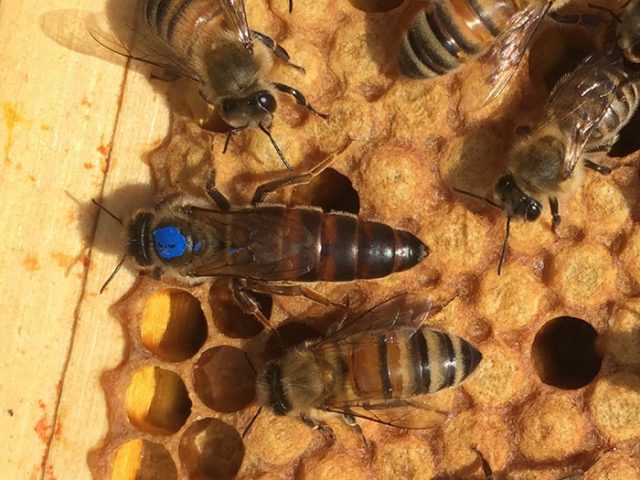
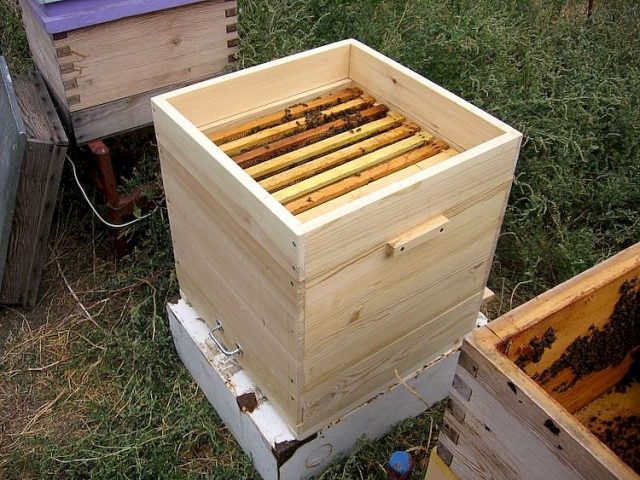

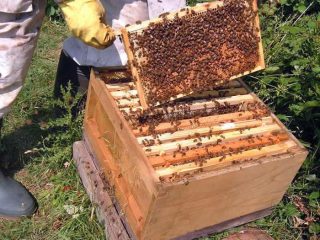

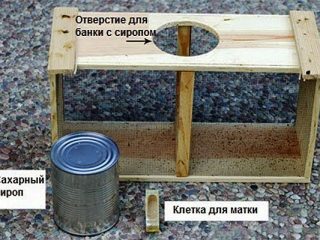



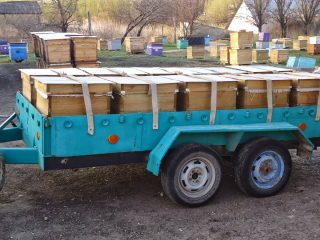

When I started feeding the colony in September, I discovered the absence of brood and a decrease in the number of bees, there were no queen cells or brood, could the swarm fly away without leaving the queen cells, or did it simply crush the queen through an oversight?